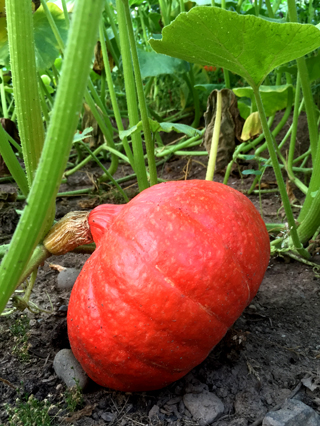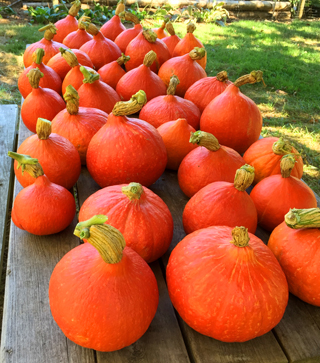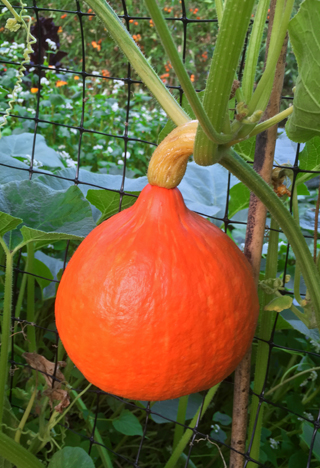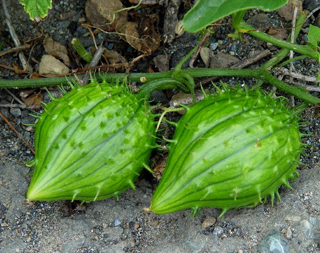
How to Grow Squash in Oregon, Washington and British Columbia
Squash are part of the cucurbit family that also includes pumpkins, cucumbers and melons. All are annual fruiting vines that prefer warm, dry weather. Squash are the hardiest members of this family and will grow well in most areas of the Pacific Northwest.
Generally, squash are divided into Summer and Winter varieties. Summer types, like Zucchini and Patty Pan, grow quickly and can produce dozens of fruits in a few months. The vines of Winter squash grow quickly but the fruit takes longer to mature, is more dense and is covered by a thick skin. Winter squash can keep for many months in a cool, dry room and make an excellent emergency food supply.
Squash and Your Health
Both Summer and Winter squash are healthful foods with significant amounts of antioxidant carotenoids. These nutrients help protect our eyes against cataracts and age-related macular degeneration. Even the starch in squash is unusually high in pectin and has been linked to protection from diabetes and better regulation of insulin.
- Just one cup of Summer squash has 19% of your daily manganese and 21% of your daily recommended copper intake.
- Winter squash is especially high in nutrients with 59% of the recommended amount of vitamin A and 26% of vitamin C in one cup.
- The deep orange flesh of Winter squash is high in five B vitamins: B1, B3, B6, pantothenic acid, and folate.
- Winter squash also contains anti-viral, anti-bacterial, and anti-inflammatory substances.
- For more information on the amazing health benefits of squash check out this list of the 100 Healthiest Foods.
Seasonal To-do List
May
- Start indoors a month before your last frost in 4″ pots.
June
- Direct sow in the garden if soil temp is at least 60°F.
- Seedlings are very sensitive to powdery mildew so don’t water until leaves unfold.
- Sow 3-4 feet between bush varieties and 4-5 feet for vines.
- Maintain even soil moisture, keep leaves dry.
July – August
- Pick summer squash when young for best flavor.
- Mulch only after soil has warmed.
- harvest all large Summer squash – leaving them to develope seeds will reduce the number of new friut.
Fall
- Leave Winter squash on the vine as long as possible but harvest when vines die back from powdery mildew.
- Clean up vines to help prevent diseases the following year.
Location
A wide-open sunny location will help delay the onset of powdery mildew in the fall and keep your squash growing as long as possible. Winter squash in particular need the longest growing season possible.
Soil Prep
Squash prefer fertile soil so add compost or decomposed manure and fertilizer.
Planting
Start indoors 3-4 weeks before your last frost. Squash transplants better if the roots are not disturbed so many people use pots made of peat or cow manure. If you’re careful a plastic pot also works just fine. If you do use peat pots break off the top edge when planting – any exposed pot will wick moisture away from the delicate roots.
Squash is traditionally grown in hills but a raised bed amounts to the same thing. Thin seedlings or transplant two so you end up with two plants per hill, 3-4 feet apart for bush varieties and 4 to 5 feet for vining varieties like Winter squash. Squash will also be quite happy growing up a trellis though you may need to make little hammocks for really large-fruited varieties.
All squash, especially seedlings, are susceptible to powdery mildew. If the weather turns cold and rainy after planting seedling may die before even emerging from the ground. Try these tips to ensure your squash get off to a good start:
- Wait until soil temperatures reach 60-65°F.
- Plant at the beginning of a warm and dry period.
- Start squash indoors, especially winter squash which needs the longest growing season possible. Don’t hold seedlings in containers longer than 4 weeks.
- Don’t water after sowing outdoors to avoid lowering soil temperature. If possible wait until seedling develop their first true leaves.
- Water plants at the base and keep leaves dry.
Water
Water regularly, keeping the soil evenly moist. Avoid wetting the leaves or splashing mud.
Harvest
Keep picking those unstoppable Summer squash! Even if you can’t eat them all, leaving them on the vine will reduce the number of new, delicious baby squash. Harvest Winter squash after the vines develop powdery mildew with the cooler Fall weather. Fully ripe Winter squash will have a shriveled, brown stem.
Like pumpkin seeds some varieties of squash seed make a delicious snack. Frankly some aren’t so tasty – more research is required.
Storage
Some varieties of Winter squash can be stored in a cool, dry room for up to a full year! In our book this makes Winter squash one of the very best grown-at-home emergency food supplies.
For the longest storage potential many people recommend wiping the skin of each squash with a bleach solution. Since we like to eat the skin (for more vitamins) we just wash with soapy water. Our guess is that hydrogen peroxide would kill just as many mold spores as bleach without any possibility of toxic residue. But maybe we’re just fussy.
Insects and Diseases
In the Pacific Northwest the main enemy of squash (and all cucurbits) is powdery mildew. This fungal disease will show up whenever conditions are cool and humid so there’s really no worthwhile treatment – it’s like trying to stop the incoming tide. Avoid powdery mildew in the Spring by waiting until the soil warms up, planting indoors before transplanting to the garden or direct seeding during a sunny week in May. When plants develop mildew in the Autumn it’s time to harvest.
Squash bugs and vine borers seem to be more of a problem in warmers areas of the country – we’ve never had any issues.






